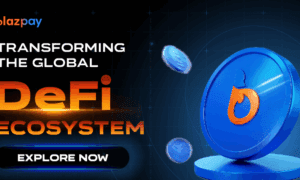If you’ve ever felt like your AI prompts are scattered across Google Docs, sticky notes, and random folders, you’re not alone. Trying to keep them organized can feel like a full-time job – but it doesn’t have to be. Open source prompt management tools are here to help. They let you store, sort, and share prompts easily, so you spend less time hunting for ideas and more time actually creating. Let’s look at some of the best free options out there and how they can make your AI workflow a lot smoother.
1. Snippets AI
Snippets AI focuses on organizing and managing AI prompts in a single workspace. Their platform allows teams to store, reuse, and share prompts without losing track of them across multiple documents. Users can access prompts quickly through shortcuts, making it easier to integrate them into ongoing projects or workflows. The tool also supports collaboration, so multiple people can work with the same set of prompts in real time.
The platform offers features that support a variety of use cases, from education to enterprise workflows. It provides options to create public workspaces, manage prompt libraries, and even incorporate voice input for writing prompts or tasks. By centralizing prompt management, teams can reduce repetitive work and maintain consistency across different projects.
Key Highlights:
- Centralized workspace for AI prompts
- Quick access with keyboard shortcuts
- Supports real-time collaboration
- Public and shared workspaces
- Voice input for prompts
Services:
- AI prompt organization and management
- Prompt sharing and collaboration
- Enterprise workflow support
- Educational prompt libraries
- Media and text preview tools
Contact Information:
- Website: www.getsnippets.ai
- E-mail: team@getsnippets.ai
- Twitter: x.com/getsnippetsai
- LinkedIn: www.linkedin.com/company/getsnippetsai
- Address: Skolas iela 3, Jaunjelgava, Aizkraukles nov., Latvija, LV-5134
2. Latitude
Latitude provides a platform for managing AI prompts and building autonomous AI agents. Their system allows teams to design, test, and refine prompts before deploying them, offering version control and monitoring to track changes over time. Users can experiment with different prompt variations and see how they perform, helping to adjust outputs in a more structured way. The platform also integrates with other tools through APIs and SDKs, letting teams connect prompts and agents with the rest of their workflow.
The platform supports multiple stages of prompt management, from design and evaluation to deployment and observation. Teams can run experiments with human-in-the-loop feedback, automated judging, or ground truth evaluations to improve prompt performance. Latitude also offers options for real-time observability, allowing teams to monitor their agents, catch errors, and compare different versions.
Key Highlights:
- Design, test, and refine prompts at scale
- Version control and deployment tracking
- Integration with APIs, SDKs, and other tools
- Real-time observability and monitoring
- Human-in-the-loop and automated evaluations
Services:
- Prompt design and experimentation
- AI agent creation and orchestration
- Production deployment of prompts and agents
- Performance tracking and debugging
- Integration with third-party tools and platforms
3. E.D.D.I
E.D.D.I is an open-source middleware designed to manage AI prompts and conversations across multiple LLM APIs. Their platform provides a structured way to orchestrate AI agents, maintain context across sessions, and handle multiple bots or versions simultaneously. It is built to be scalable and cloud-native, with options for containerized deployment and orchestration through systems like Kubernetes or OpenShift. Developers can configure the platform to connect with different APIs and manage prompts with advanced templating, enabling consistent interactions across various AI tools.
The system also includes features for conversation state management, behavior rules, and secure authentication. It is built to integrate seamlessly with popular AI services through Langchain4j, allowing teams to leverage multiple models and tools without vendor lock-in. By providing a flexible and extensible framework, E.D.D.I supports a wide range of use cases, from experimental AI projects to production-grade conversational applications.
Key Highlights:
- Open-source middleware for AI prompts and conversation management
- Supports multiple bots and version control
- Conversation state tracking for coherent dialogues
- Flexible API integrations with LLM services
- Cloud-native deployment with containerization
Services:
- Prompt engineering and templating
- Multi-bot orchestration
- Behavior rules configuration
- API connection and integration
- Secure authentication and user management
4. Dakora
Dakora provides a platform for managing AI prompts with a focus on Python developers. Their system allows users to organize templates in files, apply type-safe inputs, and update templates on the fly with hot-reload. It includes an interactive playground for testing prompts, making it easier to experiment and iterate during development. The platform emphasizes structured workflows, letting developers version templates, track changes, and validate input and output types in a consistent way.
The platform supports real-time template editing and execution logging, which can help teams debug and refine their prompts more efficiently. It also integrates well with Python-based applications, enabling developers to connect prompts to APIs and frameworks like FastAPI and OpenAI. Dakora’s approach combines a command-line interface with a web-based playground, allowing for flexible workflows and quicker iteration cycles.
Key Highlights:
- Type-safe prompt templates with validation
- File-based template organization for version control
- Hot-reload for live updates during development
- Interactive web playground for testing
- Execution logging for debugging
Services:
- Prompt template management and versioning
- Real-time template editing and hot-reload
- CLI and web-based interface for workflow management
- Integration with Python applications and APIs
- Support for Jinja2 templating and custom filters
5. Langfuse
Langfuse provides an open-source platform for managing and monitoring AI prompts within complex LLM applications. Their platform is designed to capture detailed traces of prompt execution and interactions, allowing teams to analyze performance, detect issues, and maintain a record of prompt behavior over time. Users can work with multiple SDKs and integrate Langfuse into different programming environments, giving flexibility in how prompts are managed and evaluated across projects.
The platform also supports experimentation and evaluation workflows, letting teams run tests on prompts, compare results, and store annotations for further analysis. It includes a playground environment for interactive testing and structured prompt management, helping teams maintain versioned prompts and track improvements. Langfuse emphasizes open standards and self-hosting options, giving users control over how they operate and integrate the system.
Key Highlights:
- Observability and tracing of LLM applications
- Structured prompt management with version control
- Support for Python and JS/TS SDKs
- Evaluation and annotation workflows
- Interactive playground for testing
Services:
- Capture and analyze prompt traces
- Version and manage AI prompts
- Run evaluations on prompts and outputs
- Integrate with existing LLM applications and frameworks
- Provide SDKs and API access for flexible integration
6. Agenta AI
Agenta AI offers an open-source platform for managing prompts, evaluating outputs, and monitoring the performance of LLM applications. The platform focuses on providing a collaborative environment where teams can version, test, and refine prompts across different scenarios. Users can work through a web interface that allows for interactive experimentation, making it easier to compare prompts and track changes over time.
The platform also emphasizes evaluation and observability, enabling users to systematically measure prompt performance, debug issues, and monitor application behavior. By linking prompts to their evaluations and traces, Agenta AI helps teams maintain clear records of development decisions and results. The tools are designed to support both individual developers and larger teams who need to maintain consistent workflows across multiple projects.
Key Highlights:
- Collaborative prompt management with version control
- Interactive playground for testing and tweaking prompts
- Systematic evaluation of prompt outputs
- Observability and tracing for debugging and analysis
- Web-based interface for easier team collaboration
Services:
- Track and manage prompt versions
- Evaluate prompts and measure output quality
- Debug outputs and identify edge cases
- Deploy prompts to production with rollback support
- Provide interactive experimentation through a custom playground
7. Dify
Dify provides an open-source platform for managing AI prompts, building workflows, and connecting LLM applications to data and tools. Teams can create, test, and adjust prompt-based workflows using a visual interface that simplifies the process of linking multiple models and tools together. The platform emphasizes flexible experimentation, allowing users to iterate quickly and manage workflows across different scenarios without heavy setup.
The platform also supports observability and RAG pipelines, helping teams monitor AI outputs, track prompt performance, and manage data connections in a structured way. By integrating evaluation, workflow management, and model access in one place, Dify allows developers and organizations to maintain clearer records of their AI interactions and streamline collaborative work.
Key Highlights:
- Visual workflow editor for AI applications
- Integration with multiple LLMs and external tools
- Observability for prompt outputs and workflow tracking
- RAG pipelines for connecting AI to structured data
- Open-source community support and plugin ecosystem
Services:
- Build and manage multi-step prompt workflows
- Connect AI applications to external systems and tools
- Track and analyze prompt performance
- Deploy AI workflows with structured observability
- Extend platform capabilities through plugins and integrations
8. LlamaIndex
LlamaIndex focuses on helping developers manage and organize AI prompts with structured access to data through vector stores. Their platform allows users to connect large language models to external databases, making it easier to retrieve and use relevant information for prompt generation. By using vector-based storage, teams can maintain context, link related prompts to data, and manage complex AI workflows in a more organized way.
The system integrates with various databases and storage solutions, including Postgres, allowing for scalable and flexible deployment in different environments. With a Python-centric approach, LlamaIndex enables developers to build, test, and maintain prompt-driven applications while keeping data and model interactions structured and traceable.
Key Highlights:
- Vector store integration for structured prompt data
- Support for multiple database backends including Postgres
- Python-based tools for managing prompts and data connections
- Enables contextual AI responses through linked data
- Open-source with extensible components
Services:
- Connect LLMs to external databases for prompt management
- Store and retrieve prompt-related data efficiently
- Maintain context across AI workflows
- Test and evaluate prompts using linked data
- Extend vector store capabilities for custom use cases
9. PromptDB
If you’ve ever struggled to keep track of all your AI prompts, PromptDB is a real lifesaver. It’s basically a central hub where you can store, organize, and share prompts for different AI models – text, images, you name it. Instead of hunting through random files or old documents, everything can live in one place, and you can easily browse or search for what you need.
One of the coolest things is that it’s community-driven. You can see prompts others have contributed, experiment with them, or share your own. That makes iterating on ideas a lot faster and keeps your team -or even the broader community – from reinventing the wheel. Whether you’re working solo or as part of a team, it’s a neat way to stay organized and get inspired by what others are doing.
Key Highlights:
- Open database for prompts across multiple AI models
- Supports text and image generation prompts
- Community-driven contributions and sharing
- Organized browsing and categorization of prompts
- Open-source approach with public access
Services:
- Store and manage AI prompts in a central repository
- Share prompts with team members or the community
- Browse and search existing prompts for inspiration
- Track prompt versions and adaptations
- Support multiple AI model types for prompt application
Conclusion
Managing AI prompts doesn’t have to feel messy or overwhelming. The tools we’ve talked about each handle things a little differently – some are great for experimenting in real time, others help you track every little change, and a few lean on community sharing to spark ideas. Knowing the differences makes it easier to pick something that actually fits the way you work, rather than forcing your team to adapt to the tool.
The real benefit comes when the system actually clicks with your workflow. Whether it’s testing prompts, keeping track of updates, or collaborating across projects, having one place to manage everything can save a ton of time and headaches. At the end of the day, it’s not just about storing prompts – it’s about making them easier to tweak, iterate on, and turn into real results. Pick the right tool for your team, and suddenly what felt chaotic starts to feel manageable – and even a little fun.






































